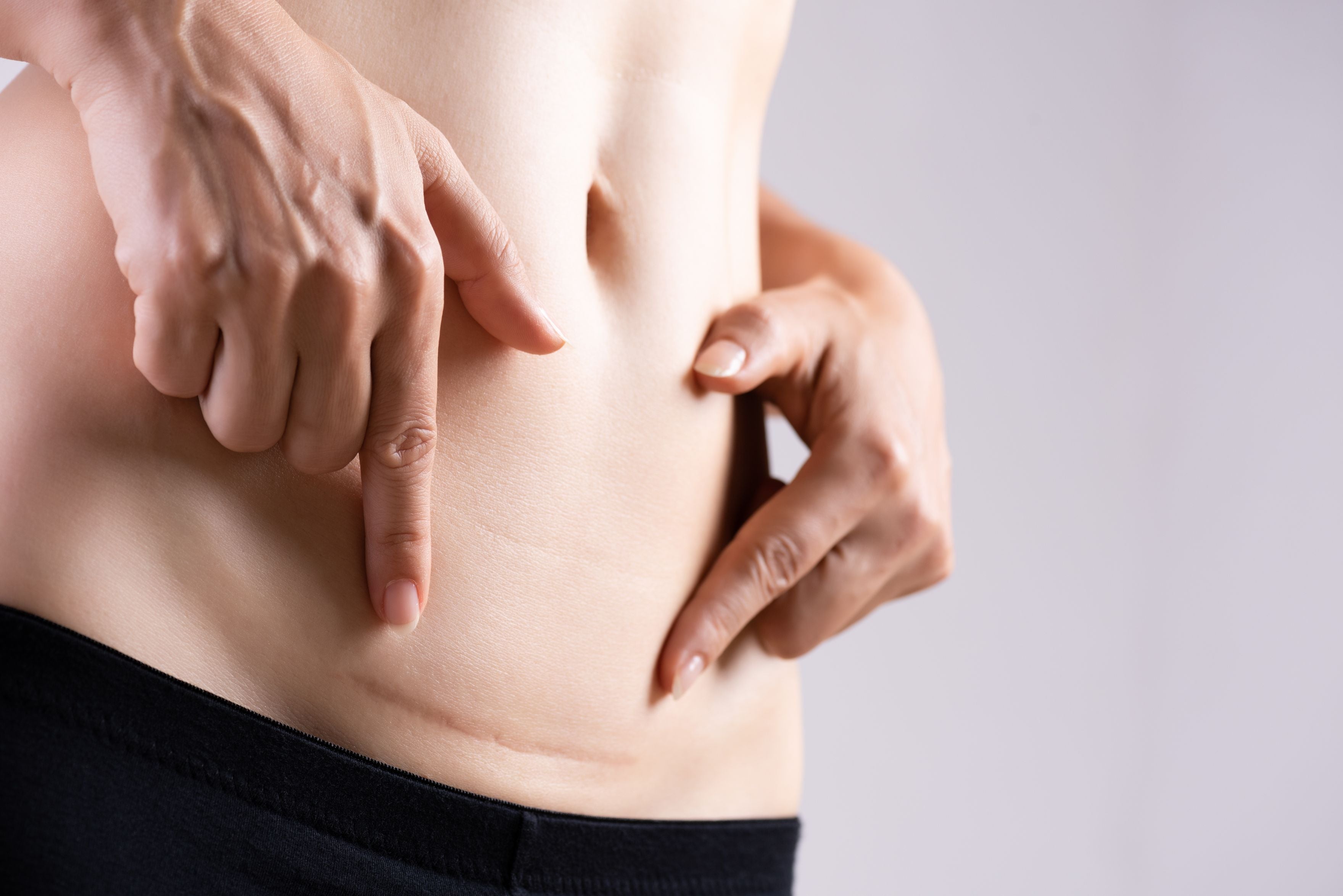
You are in the homestretch! Your baby will be coming soon, and as you finalise your plans for birth, do consider learning more about Caesarean delivery and C-section recovery. While many hope for a natural childbirth, certain instances may require you to undergo a C-section. It’s best to consult your medical team in this regard.
In the weeks leading up to your delivery, feel free to meet with your doctor and medical team to ask more about the procedure - from pre-op preparations to expected pains and side effects. In this article, read more about:
You are finally ready to meet the baby growing inside your womb after nine long months! This is an exciting time for you, but childbirth can also be physically demanding, especially if you have a Caesarean delivery (also known as a C-section delivery). Planned or unplanned, having a C-section can have an impact on both your physical and mental health.
In Singapore, the rate of caesarean deliveries increased to 34.4% in 20141, so there is a good chance you could have one as well. It is best to learn everything you can about the procedure and what a successful C-section recovery looks like.
Here is everything you need to know about a C-section recovery.
When is a C-Section Necessary?
A C-section is done by making an incision across your abdominal wall or uterus to deliver your baby. While a Caesarean delivery is considered safe, it is still major surgery, and going under the knife is more risky than a vaginal delivery.
A Caesarean delivery may be carried out as a planned procedure (elective C-section), usually during the 39th week3. An ultrasound, for example, may show that your baby is in a breech (feet first) or transverse position (sideways). In such cases, the baby might not be able to exit the womb safely, so your doctor may advise you to have a C-section.
However, when complications arise before and during labour, emergency C-sections will be performed. One instance is when labour abruptly stops or progresses too slowly. Another is when the baby is experiencing foetal distress and is not receiving enough oxygen.
An elective caesarean procedure is also typically recommended for mothers who have pre-existing chronic conditions or infections such as diabetes, heart disease, or HIV4.
C-section recovery involves both time and care. In the C-section recovery timeline, post-surgery, you will be required to stay in the hospital for two to four days to ensure no complications develop from the procedure before being discharged, followed by at least six weeks of recovery at home2.
What to Expect After Surgery
Before you learn the dos and don'ts of C-section recovery, it is important to educate yourself on the significant changes your body will undergo following surgery. Some of them include5:
- Vaginal discharge: Vaginal bleeding is your body’s way of getting rid of the extra blood and tissue in your uterus.
- Post-surgery pains: These pains closely resemble menstrual cramps, as blood vessels narrow to prevent you from bleeding too much.
- Soreness: Your breasts will be more firm, sensitive, and larger than usual.
- Changes in hair and skin: Due to significant changes in your hormones, your hair might thin out in the next three to four months. Stretch marks are also likely to form around your belly and breasts.
- Mental health issues: Pregnancy is a very emotional time, in general. And the arrival of your baby can elicit a wide range of emotions — you might cry one moment and feel anxious the next. Sometimes, these heightened emotions can lead to postpartum depression. As part of your C-section recovery, you should consider going to therapy to maintain your mental health.
If you have any concerns or are unsure, please contact your doctor for further clarification and assessment.
C-Section Recovery Tips8
C-section recovery is no easy feat. It can be overwhelming at times, but remember to take as much time as you need to recover physically, emotionally, and mentally.
1. Welcoming your bundle of joy with a smile
Within 2 to 4 days of your surgery, as you undergo C-section recovery at the hospital, medical personnel will assist you with pain management and C-section incision care, ensure that you are eating and drinking enough, and help you as you get used to moving around.
2. Be gentle with physical activity
A C-section is major surgery. Take it easy and keep your physical activities to a minimum. Walking around will help you heal and avoid blood clots6, but expect to tire easily. During this time, do not engage in rigorous activities like exercise just yet. When you get home, take it easy and avoid lifting, twisting, or any other movements that could put pressure on the incision. In addition, keep everything within reach when possible. The muscles around the abdomen and pelvic area are weak as a result of the incision.
3. Manage the pain and bleeding
Your body is still vulnerable, especially around your abdominal region. As part of C-section incision care, support your stomach when you need to cough, sneeze, or laugh. You may also hold a pillow over your incision. In cases of vaginal bleeding, use sanitary pads instead of tampons or douches to avoid infection. A heating pad or a warm washcloth can also help with the postpartum pain or cramping. An abdominal binder, which is a wide compression belt that wraps around your stomach, can also be used to provide extra support and prevent stress on sutures. This is one of the helpful C-section recovery essentials to have on hand.
4. Care for your wound properly
Expect your C-section incision to be painful as it heals. Over time, during C-section recovery, the pain will subside eventually, so just make sure to properly care for the wound as it heals into a scar. Keep the area dry and clean, at all times. You will know it is starting to heal once it becomes itchy. But avoid scratching in order to not irritate it further. Allow your wound to breathe and wear soft, breathable fabrics as much as possible. To manage pain at home, take acetaminophen or ibuprofen on a regular schedule, as directed by your doctor.
5. Eat healthy food
C-section recovery requires proper nutrition as well. Constipation is common after the procedure7, and you should eat plenty of fibre-rich foods to keep your digestion healthy. Your diet should include fruits and vegetables such as pears, apples, broccoli, beans, and legumes, to name a few. And most importantly, drink plenty of water to replenish all the fluids lost during labour. Expectant mothers are also strongly encouraged to consume milk formulated with DHA and choline to help support the development of the unborn baby. Look for milk that can help meet the body's folic acid, calcium, and protein needs.
6. Get emotional support post-surgery
Remember that you are not alone in this. When things get tough, turn to your family and friends for assistance. It is natural to feel tired and overwhelmed by emotions. The most important thing is to be surrounded by people who adore you. Your loved ones can assist you in caring for your child or take over your responsibilities for a brief spell if you need some alone time. Having your partner, family members, or friends assist you with tasks such as meal planning and preparation, laundry, and even baby care will help give you some much-needed me-time.
7. Taking care of yourself
Taking care of yourself is just as important as taking care of your baby, especially after childbirth. Listen to your body and allow yourself as much time as possible to recover. Remember, C-section recovery involves not only physical but also your mental and emotional well-being.
Putting together a one-month C-section recovery manual in your third trimester is an excellent way to prepare for the new arrival.
Additional C-Section Recovery Tips
Having a newborn while recovering from surgery leaves little time for self-care. But it is critical that you take care of yourself. Here are some pointers on what to do.
- Get enough rest. Your body needs time to heal, so do not rush back to your normal activities.
- Avoid lifting heavy objects. Nothing heavier than your baby should be lifted.
- Walk. Walking, rather than heart-pounding exercises like running or lifting weights, will help your body heal.
- Do not forget to eat. It can be difficult to eat a healthy diet during the first few weeks with a newborn, but it is critical for both you and your baby.
- Keep track of your discomfort. To provide relief and ease, use a heating pad, comfort pillows, easy attire, and practical footwear.
- Pamper yourself. Indulge in gentle massages, aromatherapy, music, and healthy food to keep the “baby blues” at bay.
- Heed your doctor’s advice. Follow any pain medication instructions from your doctor and ask for clearance before trying any home remedies for C-section recovery.
After giving birth, moms should not worry or force themselves to get back into the groove of things since their body is recovering from a major life event. When it comes to normal delivery or C-section recovery, be kind to yourself and allow your body to heal. For any questions, always consult your doctor as they can provide guidance on C-section recovery week by week.
The postpartum phase can be challenging to deal with, so join our community and become a member of the Enfamama A+ Club. Discover invaluable tips and insights, as well as free advice, FREE samples, privileges, and support from other parents.
Frequently Asked Questions on C-Section Recovery
Here, we share other important questions about C-section recovery.
1. When is a C-section advised?
Despite every mother’s initial plans for a natural birth, she may be required to undergo a C-section depending on the circumstances of her labour and delivery. A doctor may recommend a C-section, especially if the health of the mother and child are at risk. Factors may include abnormal heart rate, breech position, multiple births, prolonged labour, the mother’s medical condition and history, and a large-sized baby, among others.2
2. What are some complications associated with C-section delivery?
C-Section procedures are considerably safe, with very low rates of complications. However, there are still certain risks. These include injuries to the baby and urinary tract, as well as infections of the uterus and bladder. A C-section procedure may also affect future pregnancies, which is why full C-section recovery is critical. Consult your doctor regarding the risks and how you can better focus on C-section recovery.2
3. When to call a doctor during C-section recovery?
If you experience any of these serious signs and symptoms during C-section recovery, head to your doctor right away: intense pain, incontinence, pain during urination, heavy vaginal bleeding, foul-smelling discharge from the incision area, swelling or pain in your leg, and shortness of breath. Always consult your doctor regarding what is considered normal and safe.3
Related articles:
Expert Resource:
Dr Veena Angle
MBBS, MD Microbiology (India)
-
Trends and predictors of cesarean birth in Singapore, 2005-2014: A population-based cohort study (2018). Retrieved October 16, 2020 from https://pubmed.ncbi.nlm.nih.gov/29453821/.
-
Going home after a C-section (n.d.). Retrieved October 15, 2020 from https://www.mountsinai.org/health-library/discharge-instructions/going-home-after-a-c-section.
-
Cesarean section: Recovery (n.d.). Retrieved October 15, 2020 from https://www.nhs.uk/conditions/caesarean-section/recovery/.
-
Cesarean Sections (C-Sections) (n.d.). Retrieved October 15, 2020 from https://kidshealth.org/en/parents/c-sections.html.
-
C-section recovery: What to expect (n.d.). Retrieved October 16, 2020 from https://www.mayoclinic.org/healthy-lifestyle/labor-and-delivery/in-depth/c-section-recovery/art-20047310.
-
Caesarean birth: c-section recovery tips (n.d.). Retrieved October 16, 2020 from https://www.nct.org.uk/labour-birth/different-types-birth/caesarean-birth/caesarean-birth-c-section-recovery-tips.
-
Cesarean Section: What to Expect at Home (n.d.). Retrieved October 16, 2020 from https://myhealth.alberta.ca/Health/aftercareinformation/pages/conditions.aspx?hwid=ud1242.
-
What to expect after having surgery. Cleveland Clinic. Health essentials. Retrieved October 13, 2021. https://health.clevelandclinic.org/c-section-recovery/.




